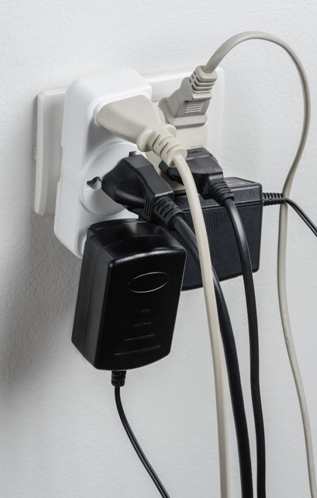The kitchen may be a wonderland for many, but accidents in the kitchen do occur and they are disconcerting. Recently, Channel NewsAsia reported on several incidences of the explosion of cooking hobs at homes. Such calamities do occur and can be fatal. It is thus important to practice good kitchen safety habits to minimise hazards and prevent injuries from happening. Here are some good kitchen safety practices that you can follow.
1. Proper maintenance of cooking hobs

Michael Higginson/Shutterstock
While it is one of the most important components of a kitchen, hobs can make cooking very inconvenient when it starts giving you problems. There are several types of hobs, and knowing the kind of hob you’re using can help you narrow down the cause of the fault.
Most of us are familiar with gas hobs in the kitchen as it comprises of burners of different sizes, thus are suited for an array of cooking needs. Reduce fire hazard by keeping it clean as grease will clog up the burners over time, causing difficulty for the ignition spark to light up. On the other hand, gas on glass hob is an alternative for people with light cooking usage but are looking for something stylish for their kitchen.
However, Stephanie Tan from interior design firm Stylerider cautions: “You have to know your cooking usage. If you are a housewife that does heavy duty cooking frequently but owns glass hobs, the tempered glass will shatter easily due to the rough placements of pots and woks. There is no way to salvage the crack as it is permanent and may cause injuries as it’ll be unsafe to use.”
It is essential that you buy hobs to suit your cooking habits and look out for cracks or faulty parts once in awhile, and service it regularly according to the manufacturer’s instructions to prevent a hazard at home.
2. Clutter hurts

HDB 4 Room by New Interior Design
Everyone loves looking at a tidy and neat kitchen countertop, with nary a stray spatula or spoon in sight. Kitchens look neater and spacious when items are kept in cabinets rather than stored out in the open.
Rachel Chew from design firm ID Gallery recommends having full height cabinets for the kitchen. “It will be practical as they help to keep all your stuff out of sight while remaining accessible, creating a neater and clutter-free look.”
In addition, have a plan in place to prevent cluttering with the “one in, one out” rule, which means that for every new item that you bring into the space, something else has to be taken out. Packing cabinets and cupboards to their maximum capacity may be hazardous as items may fall out, causing broken glass and injury. “To reduce accidents and injuries, consider incorporating pull out baskets as shelving for easier access to items which are kept at the back of the cabinet”, added Rachel.
[cta2]
3. Avoid overloading sockets

NorGal/Shutterstock
You are preparing a meal and it just seems really convenient to insert a multi socket to connect all the electrical appliances in use. The sound of the appliances whirling away is music to your ears, as you’re oblivious to the potential fire hazards of overloading a socket.
David Lim of design firm Square Room shared that it is recommended to install double point sockets in the kitchen for safety as it will reduce the chances of multi sockets being used, therefore preventing potential fire hazards that are usually caused by overloading and overheating.
Mention to your ID if you’d prefer to install additional sockets for the kitchen or at certain areas of your house, and they can advise you on the ideal location to place them.
4. ‘Grounding’ Electricity

Caron Badkin/Shutterstock
Yes, even electricity has to be kept in place by being ‘grounded’ too. Ensure that the earth wire is present in your appliances as it creates a safe route for the current to flow through in the case that the live wire touches the casing. Some appliances will have double insulation symbols, indicating plastic casings or are designed in a way so that the live wire can’t touch the casing. Make sure that your appliances are from a reliable source and are SGS Product Safety Certified, as appliances without the earth wire in their plug casings will cause an electrocution that may be fatal.
5.Safe use of knives

Olga Miltsova/Shutterstock
Admit that you’ll eat food off the kitchen knife when no one is looking once a while. But one slip of the finger may permanently scar you for life. Understanding the importance of using kitchen knives safely is essential, as it’s one of the main causes of injuries in the kitchen. Kitchen knives can be handled properly by slicing away from your hand, and curling your fingers under and holding the food with your fingertips while chopping. This prevents accidental cuts if the knife slips, thus avoiding potential injuries.
If you do cut yourself, wash the cut under running water and apply pressure to quickly stop the bleeding. Then, put antiseptic cream onto the wound and bandage it. If the cut is too deep and the bleeding doesn’t seem to stop, see a doctor right away to prevent excessive bleeding.







